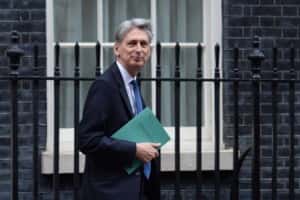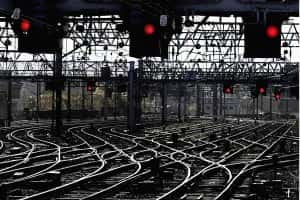
The Chancellor of the Exchequer, Phillip Hammond, has announced his first Autumn Statement since the Brexit vote in June this year. Here is a summary of the announcements.
The Office for Budget Responsibility (OBR) which provides the economic forecast, has said the UK’s growth is forecast to be 2.1 per cent in 2012; higher than the forecast in March this year.
However, they forecasted that this growth will slow next year to just 1.4 per cent because of lower investment and weaker consumer demand, which has been driven by greater uncertainty and higher inflation due to sterling decreasing in value.
Looking into the 2018, the OBR forecasts that growth will recover to 1.7 per cent in 2018, steadily rising to reach 2.1 per cent in 2020.
The potential growth is 2.4 percentage points lower than otherwise would have been the case, due to the referendum decision.
Despite this, the UK labour market is forecast to remain “robust” according to the OBR.
In terms of jobs the Office for Budget Responsibility’s forecast shows the number of jobs is growing in the UK, with another 500,000 predicted over the OBR forecast.
Hammond also acknowledged that employment grew fasted in the North East. A record number of people in work, which was an achievement met by all other regions in the UK.
The Chancellor also announced he was publishing a new draft Charter for Public Responsibility, with three fiscal rules:
- Public finances should be returned to balance as early as possible in the next Parliament. In the interim, borrowing which is adjusted in cycles should be below 2 per cent by the end of the current Parliament.
- The public sector net debt as a share of Gross Domestic Product (GDP) must be falling by the end of this Parliament.
- Welfare spending must be within a cap, set by the government and monitored by the OBR.
He added the Government had “no plans” to introduce further welfare savings measures in this Parliament beyond those already announced.

This year the amount of money the Government borrows is set to stand at £68.2billion this year,falling to £59bn next year.
It will then fall to £46.5bn in 2018-2019; then £21.9bn; £20.7bn and to £17.2bn in 2021-2022.
As well as this, the deficit, also known as public sector net borrowing as a percentage of GDP will fall from 3.5 per cent this year to reach 0.7 per cent in 2021-2022.
Cyclically-adjusted public sector net borrowing is expected to be 0.8 per cent of GDP in the same period (2021-2022).
The UK chancellor Philip Hammond has also ditched the former Chancellor George Osbourne’s commitment to return Government finances to a surplus by 2020.
Debt is also set to rise to 87.3 per cent this year; peaking next year at 90.2 per cent, according to the OBR’s forecast.
However, it is projected to fall to 89.7 per cent and to continue falling.
Also, on the other hand, public spending is set to stand at 40 per cent.
Public spending priorities will however be reviewed at the next Spending Review.
Therefore, spending plans for Government departments will remain in place, while the amount of money spent in 2021-2022 will grow in line with inflation.
Additional funding will be given to the Ministry of Justice to recruit 2,500 prison officers.
The £3.5bn of savings delivered through the Efficiency Review must be delivered in full.
The Chancellor has allowed 1bn of these savings, in 2019-2020, to be reinvested in priority areas.
The public service, defence and overseas aid budgets will be protected for the duration of the current Parliament.
Mr Hammond announced a new National Productivity Investment Fund of £23bn to be spent on innovation and infrastructure over the next five years.
Alongside this, he confirmed additional investment in research and development, announcing these areas would get an extra £2bn a year by 2020-2021.

Housing was also on the Chancellor’s agenda as he told the House of Common’s about a new Housing Infrastructure Fund, worth £2.3bn, which would deliver infrastructure for up to 100,000 new homes in areas of high demand.
Hammond also said the Government would invest more than 1bn to deliver 40,000 additional affordable homes, as well as relax restrictions on the government grant to allow a wider range of housing types.
A regional pilot of the Right to Buy scheme for Housing Association tenants was also put forward in the Autumn Statement.
The Chancellor of the Exchequer, who’s responsible for the delivery of the statement, added that there would be “continued support” for home ownership through the Help to Buy: Equity Loan scheme and the Help To Buy ISA.
Perhaps one of the biggest announcements to come from the Statement was that the Government will ban fees to tenants.

He also highlighted that “reliable transport networks are essential to growth and productivity.”
As a result, the Chancellor told MPs that the statement would commit additional funding to “keep Britain moving now.”
He announced £1.1bn pounds of investment in English local transport networks, £220million to address traffic “pinch points” on strategic roads and £450m to trial digital signalling on railways across the country.
To build on the UK’s “competitive advantage”, Hammond proposed £390m on low emission vehicles and the development of connected autonomous vehicles; as well as a 100 per cent first year capital allowance for the installation of electric vehicle charging infrastructure.
Funding for the East West Rail and a commitment to deliver the new Oxford to Cambridge expressway were also included in the statement.
Mr Hammond also said the Department of Transport would continue to work with Transport for the North to develop “detailed options” for Northern Powerhouse Rail.
A programme of major road schemes in the North was also given the “go ahead” by Hammond.
Funding for the evaluation study of the Midlands Rail hub was also announced.
Legislation to end the compensation culture surrounding whiplash claims was also announced which will save drivers £40 on average on their premiums.
The fuel duty rise has also been cancelled for the seventh year.

The Chancellor told the Commons he would also like to see the UK be a “world leader” in 5G.
As a result, he said the Government would invest over 1bn in the country’s digital infrastructure to accelerate private investment in fibre networks and to support 5G trials.
From April, 100 per cent business rate reliefs will be introduced for a five year period on new fibre infrastructure.
Scotland, Wales and Northern Ireland will also see an increase in their funding; £800m, £400m and over £250m respectively.

Four further business measures were announced as part of Hammond’s statement.
UK Export Finance capacity will be doubled. This will make it easier for businesses in the country to export.
An initiative, by Charlie Mayfield, to boost management skills across Britain’s businesses is also being funded by the Government, as well as an injection of an additional £400m into venture capital funds through the British Business Bank.
It is said this will unlock 1bn of new finance for growing firms.
A Treasury-led review was also announced that will look at the barriers to accessing long term wealth in the UK.
The Government also announced they would publish their strategy for addressing productivity barriers in the Northern Powerhouse.
1.8bn has been allocated from the Local Growth Fund to regions in England, as well as £556m to Local Enterprise Partnerships in the North.
A detailed breakdown of these allocations is due to be announced at a later date.
Lastly, in terms of business, the oil and gas sector’s Carbon Price Support will continue to be capped out until 2020.
Devolution was also a topic of conversation in the statement.
The Chancellor announced new mayoral authorities in England would be granted borrowing powers to reflect their new responsibilities.
The North East rejected the devolution deal put forward by the Government earlier this year.
The city of London was also allocated funding as its share of national affordable housing funding to deliver 90,000 homes.
The capital will also have the adult education budget devolved to it and be given greater control over employment support services for “the hardest to help.”

Wentworth Woodhouse near Rotherham was granted £7.6m to go towards repairs to safeguard the house.
The Chancellor also confirmed £102m of funding of LIBOR bank fines would be distributed to armed forces and emergency services charities, including £20m to support a national rehabilitation centre in Nottinghamshire.
Three million pounds from the Tampon Tax fund will also be distributed by Comic Relief to women’s charities.
The “triple lock” pledge to pensioners will also be met, according the the statement.

For businesses, corporation tax, the tax on profits of registered companies, will fall to 17 per cent.
Meanwhile, insurance premium tax, which is paid on all insurance premiums, will rise to 12 per cent from June 2017.
Travel insurance is exempt from the rise as it has a separate tax rate.
While, the Government will implement a business rates reduction package worth £6.7bn.
Other changes included the lowering of the transitional relief cap from 45 per cent next year to 43 per cent.
From April next year employee and employer National Insurance thresholds will stand at £157 per week.
While there is no cost to employees, businesses will face a maximum cost of £7.18 per employee per year.
In the same month, employers and their employees who use schemes, where they can sacrifice salary and pay lower tax on benefits in kind, will pay the same taxes as people who pay tax on their cash salary.
Hammond confirmed that ultra-low emission cars, pensions saving, childcare and the cycle to work scheme would be excluded, while certain long-term arrangements would be protected until April 2021.
Small businesses in rural areas will also get a tax break of up to £2,900 a year, as the rural rate relief will increase to 100 per cent.
Other areas of change for taxation included the removal of tax benefits of disguised earnings for the self-employed and employers, tax advantages linked to Employee Shareholder Status being abolished and the introduction of a new penalty for those who enable use of tax avoidance schemes.
There will also be a restriction on tax relief for corporate interest expenses and reform way relief is provided for historic losses. This will take effect in April and will, according to the Chancellor, “ensure large businesses will always pay tax in years where they make substantial profits.”
The Government also announced they would shut down inappropriate use of the VAT flat rate scheme that was put into place to help small businesses.
Tax-free personal allowance will raise to £11,500 in April 2017, but the Government has said they will deliver their commitment to raising it£12,500. This will mean employees won’t need to pay tax until they earn this amount.
Once this commitment is reached, the personal allowance will rise automatically in line with inflation.
It is then up to the chancellor to decide from year to year whether more is affordable.
The higher rate threshold will reach £50,000 by end of this Parliament.
Employees will also see the National Living Wage rise to £7.50 in April, while people on benefits will see the Universal Credit taper rate will decrease by 2 per cent to 63 per cent.
This taper is a reduction to the universal credit based on your earned income. Due to the decrease families will be able to keep an additional 2p for every extra pound they earn.
Pensions will also face a change – the Money Purchase Annual Allowance will be reduced to £4,000 to prevent double tax relief.
It was also announced by the Chancellor that the Government will be consulting on how best to ban pension cold-calling schemes and other pension scams.
Savers will also benefit from this statement with the introduction of a new savings bond, launched through National Savings & Investments (NS & I), will allow savers to receive interest of 2.2 per cent on up to £3,000.

In early 2017 the roll out tax-free child care across UK will begin, while there will be new capital funding for grammar schools.
Hammond also announced £10bn of additional funding per year for the NHS by end of 2020-2021.
The final announcement came about the statement itself.
The Autumn Statement will be abolished.
In 2017, the UK will have a Budget in the autumn, while a Spring Statement will be issued from 2018.
This will respond to the forecast from the Office of Budget Responsibility.
What do you think of the Autumn Statement? Let us know on Twitter @SRNewsNow or on Facebook at SR News.



